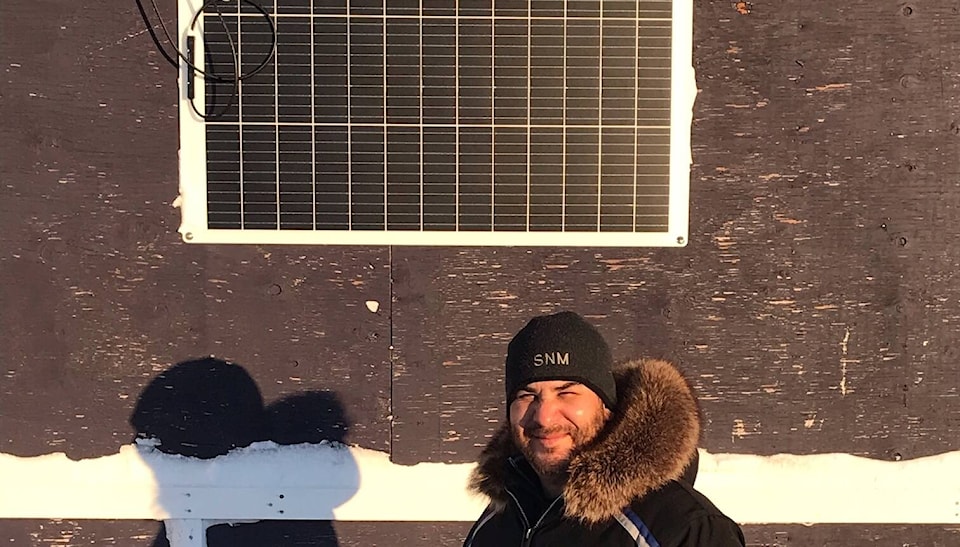After a Rankin Inlet man installed solar power in his cabin, he asked himself why he took so long getting into the 21st century.
Jackson Lindell got the idea from another resident in town, and being a handy and curious businessman himself, he investigated further for his own cabin.
“He explained it to me a bit and showed me the simplicity of it in his cabin and I was like, OK, why am I not doing this?” said Lindell.
“So I found a very small system, got a battery and put it in my cabin. And the usage of it was instantaneous. The battery was charged and hooked up to our cabin and voila, we had electrical power without running the generator. It kind of made me think why I hadn’t been doing this for the last 10 years and why I’ve been such a Neanderthal.”
That was in 2018, and he’s since become passionate about renewable energy and an advocate for “green” conversions at cabins.
Cabins have a few main requirements for power, he said: charging electronics, keeping the lights on and powering appliances like TV and satellite.
His solar battery covers most of those needs, depending on how much energy is needed on a given day.
“You may have to turn your generator on, but the system is designed so the electricity you’re getting from the battery and your generator are combined into one,” explained Lindell. “So it’s very easy to go from one to the other.”
Though cabins aren’t widely used in the heart of winter, solar batteries still provide enough power to keep a charge with what little sunlight is available, he said.
His cabin is just outside of Rankin Inlet and his usage needs aren’t huge. Another benefit Lindell has found of installing solar power is that it’s made him much more conscious of energy use.
“It really teaches you how to conserve your electrical usage,” he said, adding that it almost becomes a game to manage power wisely. “You learn pretty quickly to turn off all the lights when they’re not being used,” as well as unplugging appliances.
For him, it’s turned into a passion.
“When you really get into it, you start looking for ways to be more efficient,” said Lindell, who made other changes like switching from tungsten to lower-wattage LED lights.
“You start to play with what you have, and it becomes a passion to see how efficient you can become. And not only that: you start to realize how easy the system is. When you start to understand all the components to the system, you can see where you could add more storage or more charging capabilities. So it’s one of those satisfying things in your life where you really do feel like you’re making a difference.”
He hasn’t installed renewable energy in his home yet because it’s considerably more technical; instead, he now sells packages for solar installation in cabins. He’s sold eight or 10 of them in Rankin Inlet and says they cost a couple grand for the smallest package.
The Government of Nunavut recently announced a grant program to install renewable energy systems at cabins and homes. Owners can apply to the Department of Environment’s Climate Change Secretariat for a one-time grant of up to $5,000 to install solar or wind power systems. Homeowners can apply to Nunavut Housing Corporation for a one-time grant of up to half the cost – to a maximum of $30,000 – toward a solar energy system.
When it comes to installing renewable energy on a home, homeowners require Qulliq Energy Corporation’s approval to join the Net Metering Program, which gives renewable energy generators credit for putting surplus energy into the power grid.
Casey Lessard, manager of communications, education and outreach for the Department of Environment, said as of Nov. 30, the Climate Change Secretariat had received about 40 inquiries for the cabin program.
“A total of 28 Nunavummiut from Rankin Inlet, Iqaluit, Kugaaruk, Kugluktuk, Whale Cove and Arviat have applied for the grant,” he stated in an email.
Nunavut Housing Corporation had received two applications for the home program by that time.
To learn more about the grants available, visit climatechangenunavut.ca or nunavuthousing.ca.
